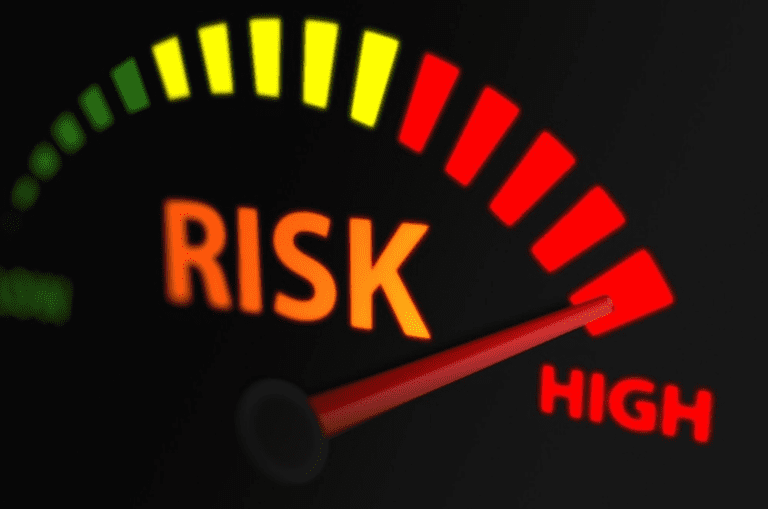T he stock market is a financial exchange in which shares of a publicly held company are issued and traded. The value of these stocks go up and down based on several economic factors.
There are companies whose stock grows slowly over time and the investment in such stock is seen as a thoughtful investment. Then, there are stocks whose company fortunes are uncertain, and as a result, an investment in their stock is seen as risky.
Investors are always warned that the principal investment in any stock can be lost. There is no guarantee that the stock market will work in an investor’s favor. But, there are high-risk stocks which draw the gambler among investors. High-risk stocks offer the potential of great reward.
They also come with a severe warning. The risk involved is the potential loss of all the money you invested.
Table of Contents
A Definition
There is some specific characteristic of a company that makes investing in its stock a high-risk proposition.
High-risk stocks are issued by:
- companies which operate in new markets (usually technology of social media) or
- in a marketplace that is known for its volatility.
Such volatile markets include media, luxury goods, automobiles, or consumer service-related businesses. Examples of such high-risk stocks include technology stocks such as Sabre Corp. (SABR), Advanced Micro Devices (AMD), and Tesla (NASDAQ: TSLA). Cryptocurrencies such as Coinbase Global (NASDAQ: COIN), or oil and petroleum companies such as NOV (NOV) are innovative firms with high-risk stocks available.
More established companies with a long history are more likely to offer low-risk stock positions. These stocks tend to have steady increases in value and some companies offer dividends to shareholders.
Why Risk it?
Knowing low-risk stocks offer occasional and variable payouts or value increase, why would high-risk stocks be a consideration?
There are two reasons an investor might look at high-risk stock purchases:
- A chance to invest in a lucrative new company on the ground floor.
- The hope that the stock will climb significantly in a short period of time. Investors can conduct a quick buy-and-sell to make good money.
Wise investors who are willing and capable of waiting for a stock to grow and mature are not likely to put much of their portfolio toward high-risk stocks. However, those investors have a base of the majority of their portfolio invested in low-risk, steady growth stocks. Those investors are then willing to put a percentage of their portfolio toward a more high-risk stock.
Why Are You Investing?
Just as with other aspects of human life, younger investors are more likely to be interested in high-risk stock opportunities. Younger investors still have the majority of their earning years ahead of them. They see high-risk stocks as a way to take a chance with some disposal income. They are willing to take a chance on losing their investment dollars in hopes of getting lucky with a high growth stock.
Older investors are looking to their stock purchases as a way to help pay for their retirement. They are less likely to put their principal at risk.
How to Choose?
If there was a magic formula for seeing a high-risk stock, everyone would apply it. There are three popular forms of high-risk stock that investors can consider.
Commodities: Not particularly exciting, commodities are the companies that produce raw materials used to create most of the physical items in our lives. Commodities include farm materials such as grains, or livestock. Oil and mining companies are also considered commodities. The reason these are high-risk stocks is that their value is tied to the health of the economy. The commodities market is difficult to predict.
IPOs: IPO stands for Initial Public Offering. Companies that transfer from private to public issue IPOs to determine the value of their stock in the open market. IPOs are the easiest way to invest in a company at the very beginning of their stock market run. The problem with IPOs is that the initial price is based on pure speculation. The opening price often is higher than the price the stock settles at in as little as one week.
Penny stocks: Penny stocks are shares that sell at less than five dollars per. They are attractive because they cost so little, and they can jump percentage-wise much more than more expensive stocks. They are often used by companies who have issued a high number of shares in an attempt to raise capital. As a result, investors must purchase a large number of shares for the investment to pay off.
For the More Sophisticated Investor
Investing in individual stocks is one way to make a quick buck. Another way is to join others in a speculative investment known as a hedge fund.
A hedge fund is like a mutual fund that invests in a variety of high-risk companies or industries. Mutual funds invest from hundreds or thousands of investors in low-risk, reliable companies. Hedge funds have similar participation but invest in several different companies in different high-risk asset classes. Hedge funds often invest in commercial real estate opportunities. It is also possible to invest in a hedge fund concentrating on several different cryptocurrencies.
To invest in a hedge fund, investors need to be accredited. Accreditation for individual investors requires a minimum annual income and differs from one hedge fund to another.
The Bottom Line
High-risk investments are for those investors who have money they can afford to lose. That’s not the goal, obviously, but it is a real possibility, more so than with a more common and established stock.
But investors invest in order to increase their assets, and high-risk stocks can do that. Financial advisors can look to an investor’s portfolio and assets to determine if they are a good candidate for high-risk investing.
It is certainly possible for an investor to “play’’ the stock market without professional guidance. However, if investing is part of a long-term plan for income and savings, working with a financial advisor is advised. It does cost money to work with a financial advisor. But they are more likely to get you into investment that will help pay for their services.


















